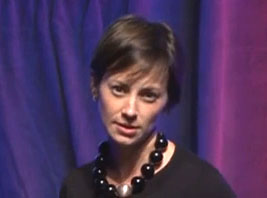SMU’s Kate Canales aims to engineer creativity
Research Prof. Kate Canales is director of design and innovation programs at SMU's Lyle School.

By Caroline North
Kate Canales is a problem solver. The current problem she’s working out? Building a master’s in design and innovation, the first of its kind, at SMU’s Lyle School of Engineering. The program’s mission is to develop creative thinkers for work in all kinds of industries — ranging from advertising to business to engineering to cognitive science — by teaching design methodology.
Canales, who grew up in Dallas, received an engineering degree from Stanford, where she also studied studio art. She fell in love with design when she realized that’s where art and engineering intersect, and went on to work as a product designer, most recently at frog design in Austin. She has designed products as diverse as children’s board games and mobile messaging technology that delivers lab results to remote clinics in developing countries.
Now her main job is director of design and innovation programs at SMU. Much of Canales’ work focuses on integrating empathy with design.
In 2012, after she gave a TED talk at SMU on the subject, the dean of the engineering school approached her about incorporating her ideas into their curriculum. Canales uses a surgery patient as an example of why empathy is essential to design. “We ask, ‘What is the human experience that the patient is having and how can you design that to be more pleasant, more effective, more filled with compassion?’” she says. “It seems a little callous to say that empathy is a tool, but it is. If you can achieve empathy, you’ll see something new.”
In courses such as building creative confidence and human-centered design, Canales discusses resilience and fear of failure with her students, and ironically, the lessons she teaches are relevant to her experience creating them, since there’s so little precedent for what she’s doing. \
“It has this meta-level meaning. Making the thing [the design and innovation program] itself is an exercise in the thing itself,” she says. The master’s will comprise four core courses that she created, along with existing courses drawn from the engineering, business, art, and humanities and sciences schools. She recognizes that master’s programs aren’t usually built that way.
“I think if it’s a degree in design and innovation it needs to be innovative,” she says. “Otherwise we’re hypocrites.”
# # #